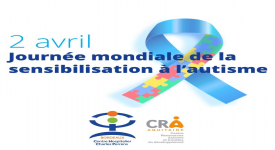Predicting Autism from Head Movement Patterns during Naturalistic Social Interactions
Proc 2023 7th Int Conf Med Health Inform ICMHI 2023 (2023). 2023 May;2023:55-60. doi: 10.1145/3608298.3608309. Epub 2023 Oct 18.
ABSTRACT
Autism spectrum disorder (ASD) is a neurodevelopmental condition characterized in part by difficulties in verbal and nonverbal social communication. Evidence indicates that autistic people, compared to neurotypical peers, exhibit differences in head movements, a key form of nonverbal communication. Despite the crucial role of head movements in social communication, research on this nonverbal cue is relatively scarce compared to other forms of nonverbal communication, such as facial expressions and gestures. There is a need for scalable, reliable, and accurate instruments for measuring head movements directly within the context of social interactions. In this study, we used computer vision and machine learning to examine the head movement patterns of neurotypical and autistic individuals during naturalistic, face-to-face conversations, at both the individual (monadic) and interpersonal (dyadic) levels. Our model predicts diagnostic status using dyadic head movement data with an accuracy of 80%, highlighting the value of head movement as a marker of social communication. The monadic data pipeline had lower accuracy (69.2%) compared to the dyadic approach, emphasizing the importance of studying back-and-forth social communication cues within a true social context. The proposed classifier is not intended for diagnostic purposes, and future research should replicate our findings in larger, more representative samples.
PMID:38699395 | PMC:PMC11064057 | DOI:10.1145/3608298.3608309




